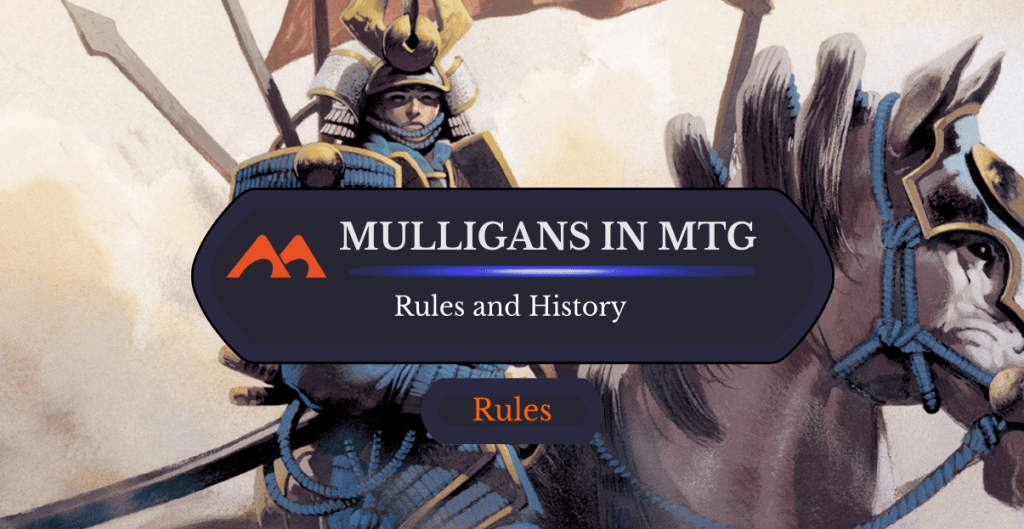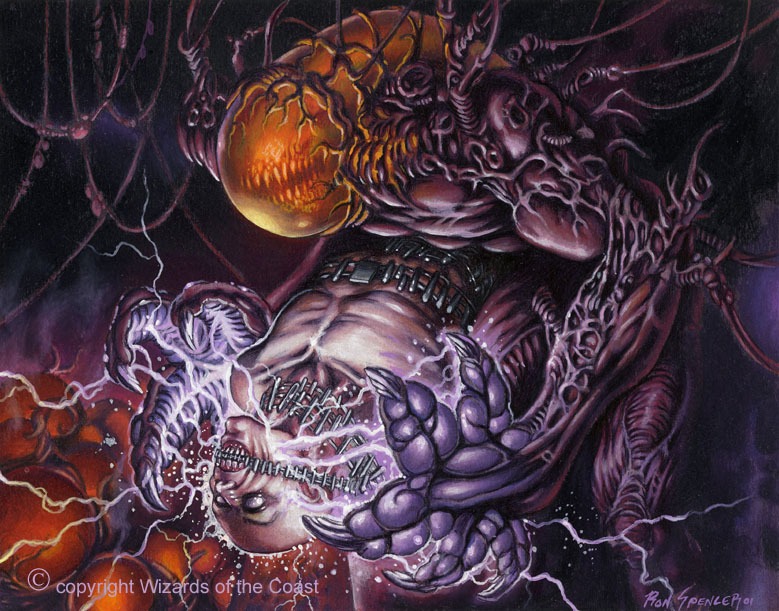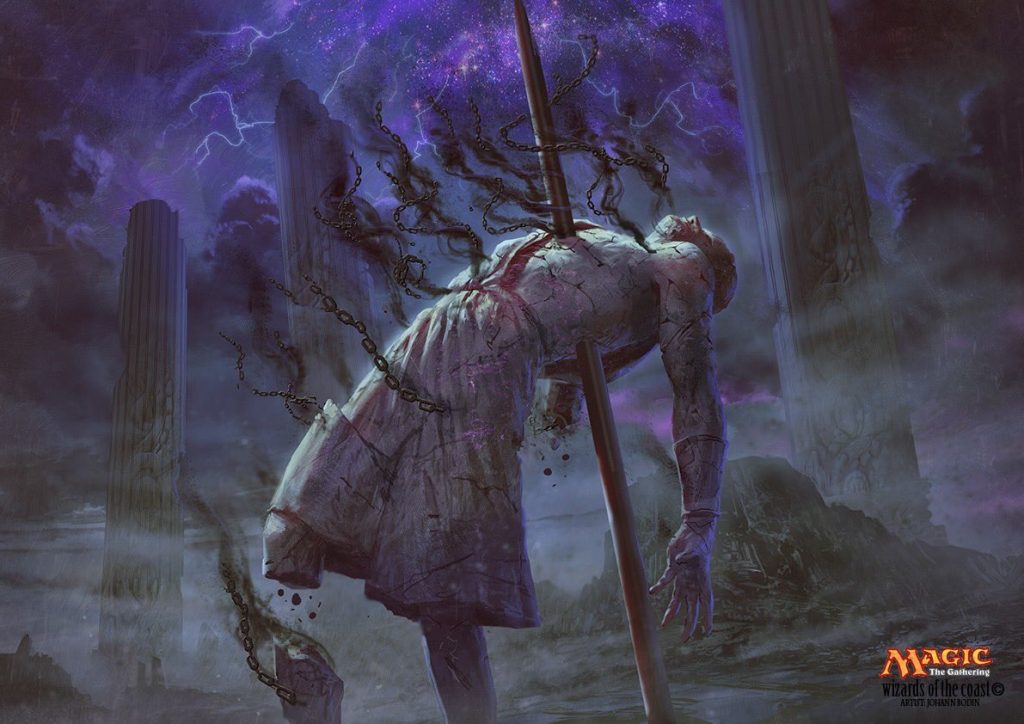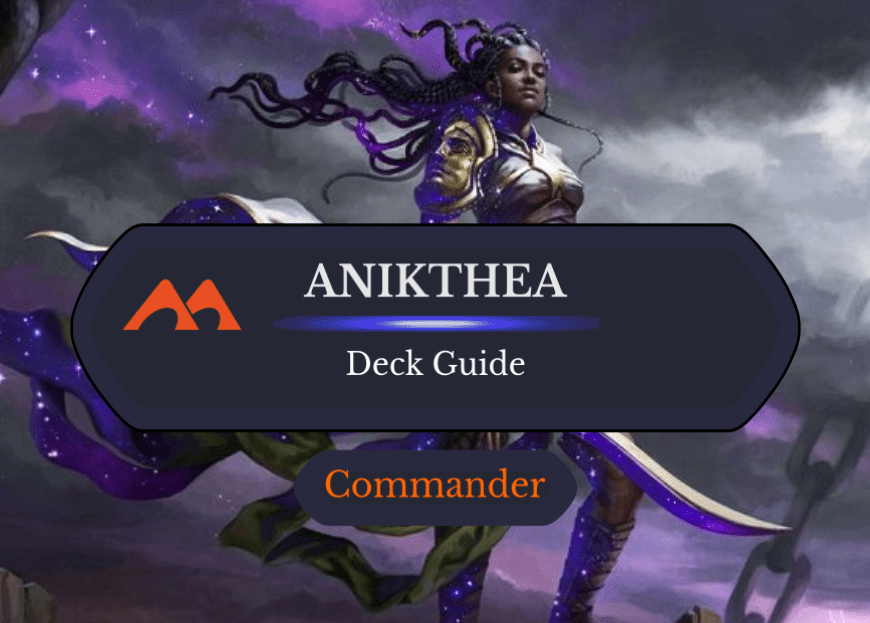Last updated on March 14, 2024

Hand of Honor | Illustration by Kev Walker
So, you wanna know about the mulligan? The mulligan is both a piece of art and a strategic game piece. It can be the difference between winning the finals of the Pro Tour or crashing out.
It means a lot to the game’s functionality. Mulligans are a key part of its systems, and the game would be nigh unplayable without them. So, what is the mulligan? Join me on this journey to investigate the deepest parts of this rule, and what makes it so important!
What is a Mulligan?

Dark Ritual | | Illustration by Clint Langley
In Magic, a mulligan is an action you can take before the game to trade your hand in for a new hand, usually at the cost of a small penalty.
A “mulligan” is a term for a do-over in competitive tournaments. Originating in golf, the sport that nobody watches (if you do, you don’t), it started to become a thing in card games in the early days of Magic, with the DCI introducing the “original mulligan” in 1994.
We’re going to be having a chat about mulligans in Magic for the whole of this, so let’s start by looking at some of the other card game mulligans.
Pokémon
Pokémon’s mulligan system is simple. If you draw an initial hand with no basic Pokémon (you need to start the game with a basic Pokémon in play), you get to reshuffle until you do. For each mulligan taken this way, your opponent may draw a card. It’s nice, elegant, easy, and has been the same for most of the history of the game.
Yu-Gi-Oh!
Yu-Gi-Oh!, however, doesn’t have a mulligan rule. Because of its lack of a resource system, a mulligan would make combo decks way too consistent. What you draw is what you get. Yu-Gi-Oh! is designed around no game being a “non-game” anyway, so it doesn’t require a mulligan rule.
MTG
The current mulligan rule is the London Mulligan. This mulligan lets you draw a new hand of seven as a mulligan each time, and then on a keep, put back a number of cards on the bottom of your library equal to the number of mulligans taken.
This is the current mulligan rule in every format.
Why Are There Mulligans?

Uro, Titan of Nature's Wrath | Illustration by Vincent Proce
So, to work out why Magic has had so many iterations of this rule and why the rule is so divisive within the community, we need to take a look at a few things.
Non-Games
This is a very strong argument for the mulligan’s existence in Magic. Without it, there would be a lot of these games where you don’t draw a land or you draw too many lands. This removes the strategy from the game, in a sense. It makes it a lot more RNG (random number generator) based than being able to strategically mulligan.
Magic also has a robust resource system that the game is balanced around, so it’s important to have some control over what resources you start with, without making decks too consistent. Speaking of…
Consistency
Nobody disagrees with the rule existing, but certain mulligan rules are more consistent than others in Magic. Of course, I’ll explain more in a bit, but how often you can have a “perfect” or “near perfect” opener is often the determining factor of a mulligan rule’s strength. This is where the debate happens.
A lot of people have come around to the London Mulligan now, but this wasn’t the case a year ago at its release, a year and a half ago, at the time of writing.
With all this being said, finding the right mulligan for the game has been a huge job for the game rule designers! In total, we’ve had four mulligan rules.
Previous Versions of the Mulligan Rule
The Original Mulligan

Pondering Mage | Illustration by Tommy Arnold
Initially there was no mulligan rule, as the developers of Magic didn’t want the rule to reward poor or inconsistent deckbuilding. There were a lot of informal rules created in the game’s infancy to try to make less non-games happen.
In 1994, the DCI introduced the Original Mulligan: if your hand had no lands or no spells, you could shuffle it in and draw a new hand of seven, with no penalty. This could only be done once a game.
This may seem like a fair and balanced rule, and it was for a while. It meant that you had to use strategy to get out of tough situations while still being able to neuter games where you got nothing done. But the game is a lot more dynamic than land/no land, and Wizards R&D got fed up with this because it meant that your hand sucked sometimes but you had to stick with it.
It was a linear way of making a rule for a highly dynamic card game so, eventually, Magic adapted.
The Paris Mulligan
The Paris Mulligan was developed and designed by Wizards R&D, helmed by Pro Tour player and future WotC alumni Matt Hydra in 1997. This mulligan rule meant that you could mulligan any of your starting hands, drawing one less card each time. This meant that you could sculpt your hand however you wanted but were slightly penalized every time you did.
Now, this was the rule for the majority of the game’s history. A lot of Magic players cite this as the mulligan rule they were mostly used to, so it’s often spoken about when it comes to mulligan history. The rule existed from 1997 to 2015. It’s a rich part of the game’s history, having contributed to many-a-tale from that period.
The naming convention also began here. The name is taken from the Pro Tour at which the mulligan was demoed, this one being Pro Tour Paris 1997. It was tested before at Pro Tour Los Angeles and was accidentally included in the game rules for Paris, but the name stuck.
The Partial Paris
The Partial Paris Mulligan was a complex mulligan rule made specifically for the Commander format. It’s a rule in which each player initially draws 7 cards and, as many times as they like, may set aside any number of cards from their hand and draw that many cards minus one. Once a suitable hand is kept, the cards set aside are shuffled into the library.
It’s really complex, and there’s a reason why Commander’s mulligan rules were consolidated into the Vancouver Mulligan at Pro Tour Oath of the Gatewatch.
The Vancouver Mulligan

Liliana of the Veil | Illustration by Steve Argyle
The Vancouver Mulligan, debuted at Pro Tour Magic Origins in Vancouver, is similar to the Paris Mulligan except that you get to scry 1 after mulligan-ing and deciding to keep. This was a small change made to help accelerate tournament play as it helped ensure that players would keep hands without too much shuffling.
This mulligan was the rule that I personally used when I started playing so it’s huge to me, even though I prefer the London Mulligan. I think that this is the most balanced mulligan rule pre-London by a mile, and it was loved by most.
The London Mulligan
The London Mulligan, debuted at Mythic Championship London 2019, was a complete overhaul to the mulligan system, so it came with a lot of controversy. This is the current mulligan rule and it has helped the consistency of certain decks almost tenfold.
With this mulligan rule, you draw seven cards each time and then put a number of cards on the bottom of your library equal to how many mulligans you’ve taken after choosing to keep.
This has quite a few effects on the game. It increases consistency as it allows you to see more cards. Instead of drawing (and seeing) only five cards if you mulligan twice under the Vancouver rules (plus the one scry upping the seen cards to six), for example, you see a full seven and get to decide which of those you keep. It also drastically decreases the number of non-games. The thing is, this makes combo decks such as Tron and Neoform stronger in Modern because they’re able to mulligan to pieces of their combo.
The rule was heavily disliked at first because of this, but a lot of people came round to it as they realized it improved all decks. Sure, it’s very powerful, but it’s just as powerful for you as it is for your opponent. However, many people thought it contributed to a “silver bullet” metagame.
Silver Bullets and Sideboarding
Mulligan-ing and sideboarding go together like Bonnie and Clyde. The stronger the mulligan, the easier it is to find your specific hate cards from the sideboard. The London Mulligan increases this dramatically. You get to see seven cards each time, keeping the odds at a total of, let’s say for a single sideboard hate card, 1 in 60 for each mulligan, which is not true!
Math and magic, you see, is super complicated. Even more so than you may think. There’s a complex art behind Magic probability, which Game Theory did a video on way better than I could ever explain:
So, mulligan-ing with the London Mulligan increases these odds, as you have the same chance of finding the card you need each time.
The Impact of the London Mulligan
The London Mulligan had a lot of impact on a lot of different formats, especially formats where card selection matters more.
Standard
Of course, the sideboard probabilities apply as with every constructed format, but the rule only made it more effective in that decks became a bit better. There was no egregious combo or card that became more consistent because of it, and all of Standard’s issues would’ve honestly been the same if we stuck with the Vancouver Mulligan.
Modern, Legacy, and Vintage
All three of these formats felt a similar impact with the London Mulligan’s inclusion. Combo decks got stronger and a bit harder to deal with. This, however, was neutered by the many design mistakes made anyway, so nobody really felt the effects of this other than some fringe decks becoming playable. And Tron becoming even more consistent.
Reid Duke actually has a whole module on mulliganing in his Modern course for Spikes Academy if you want to learn more about this in depth.
Limited
The London Mulligan is huge for Limited formats like booster draft, sealed, and Cube, as it helps dig for specific cards and bombs that you might want in your hand at the start of the game. It also makes mana inconsistencies more consistent. However, this didn’t have a sizable impact either, or at least not as horrific as was thought in the infancy of the rule’s creation.
Commander
Commander has always tried to stay unique because of its unusual restrictions, so Commander has some weird mulligan rules.
The London Mulligan is currently in use in Commander, and you get a free mulligan at the start of each game (a free redraw) because of the amount of variance in a Commander deck, with it being 100 card Highlander.
However, Commander used to have completely different mulligan rules from 60 card constructed, as stated above in the Partial Paris Mulligan. Nevertheless, Commander’s status as a casual, house-rule format means many players have adjusted this rule to their own liking.
Serum Powder
This is a card that essentially lets you have an extra opening hand by revealing it, then exiling your hand, and then drawing cards equal to the number of cards in your hand instead of taking a mulligan. It's used in decks like Modern Serum Eldrazi, which was huge at the inception of the London Mulligan.
The way the rule works is pretty interesting, though. If you exile it with a mulligan, you have to put a card back, allowing you to save a card in your hand from eternal banishment and then draw six cards instead. It’s an interesting interaction which can be used for some minor gameplay advantages like putting away singular combo pieces.
How to Mulligan
This is a really interesting part of mulligan-ing, to be honest. In general, how does one mulligan? Now, I’m going to be honest, I’m no pro Magic player or anything like that. I’ve got a few 5-0s to my name and all that, but I’m not a pro. With that being said, I have met and interacted with a lot of MTGO grinders, who I’ve discussed this with a lot.
I’ve also been told that I mulligan fairly well, being careful about wanting to keep hands analytically and not just keeping “that will do” hands, which is something I pride myself on. My mulligan strategy is tons stronger than my sideboard strategy, at least.
So, how do I evaluate a hand?
It’s different for different decks. My main decks are fair decks from Jund to Death and Taxes to control (and Twin, if you can call that fair), so I’m a bit more knowledgeable in those pursuits.
So, this is just a general rule of thumb for Magic: if you have a deck that wants to mulligan weirdly like specific combo decks, I’d recommend watching lots of gameplay with that deck to get an idea of when to keep and when to ship.
But if this is a game 1 mulligan, I look at my land-to-mana count. Do I have enough lands to progress in the game with this hand? Are my mana colors all intact within the hand? That’s the most important thing, above all else: make sure you have a low enough array of costs that you’re not just sitting around and doing nothing while also having enough lands for a decent start. This is also part of the art of deck building.
I then look at my turn 1 plays and see whether I have any. If not, I look at my turn 2 plays and see what’s good there.
Jund and Death’s Shadow

Aether Vial | Illustration by Billy Christian
When playing these, I like to make sure that I have either hand hate (e.g., Thoughtseize) or some form of removal, usually the former. I also like to have one of the planeswalkers, hopefully Liliana of the Veil, as well as a creature or two to apply pressure.
Death and Taxes
However, when playing Death and Taxes, I like to make sure that I have a good turn 2 play since the only turn 1 plays I have in Modern are Giver of Runes and Aether Vial.On the blind, especially on the play, my 2-drops are more vital to secure victory.
It would be nice to have the cards above but there’s no point having a Vial or Giver if there’s no good creatures in my hand to disrupt play. Obviously, in game 1, an Aether Vial with a low number of lands is usually a good keep, especially if the rest of your hand is gas.
Blue Legacy
In Legacy with blue decks, I try to keep a hand with a good amount of cantrips and counter spells (usually a Force of Will or Daze), but Legacy is a lot harder to evaluate.
It requires playing the format and seeing what your opponents are doing to know what to keep and what not to keep. In Hogaak and BUG Togless (a deck which I have fallen in love with recently), a Thoughtseize or Cabal Therapy can also be a good opener.
Winds of Change

Cabal Therapy | Illustration by Ron Spencer
Do I think that the London Mulligan will stick around?
Yes.
It’s a really intuitive mulligan, letting people enjoy the game and play with a better chance to play the cards they want. It works really nicely in competitive play, too, reducing the amount of shuffling and speeding up games quite a bit.
Of course, I’m open to new experimentation, but for me the London Mulligan is the perfect mulligan, at least for now. I don’t think that the consistency boost is a huge issue, especially with the amount of hate pieces keeping unfair decks in check. The midrange Uro piles are currently the true problem in Modern, which is ironic, so I don’t think it’s too much of an issue.
The London Mulligan is also representative of an era of Magic that’s bittersweet for most players, though. With Wizards slowly starting to shift design away from high power creep like Uro, Titan of Nature's Wrath, it’s possible that the London Mulligan may disappear to shun the current Magic era and look towards a new one.
Do I think this is right? No. But who knows what Wizards will do in the next few years. Nobody really does. With this being said, I know that some people strongly dislike this mulligan, and to those people: more power to you! I can see the reasons to and, while I don’t agree, respectful criticism is healthy for the game.
But, as they say, change is sometimes a good thing, so hopefully whatever does come next will match this or even beat it. If something does come next. The London Mulligan is here to stay for now, though, and I for one am okay with that.
Become an Expert
If you want to get the perspective of possibly the greatest player of all time — Paulo Vitor Damo da Rosa — he covers mulliganing in depth in his course on Magic strategy:

If you want to learn from a pro how to mulligan the right way, I highly recommend checking it out.
Wrap Up

Final Death | Illustration by Johann Bodin
That’s it from me for today! What do you think of the London Mulligan? What’s your favorite mulligan? Do you have any mulligan ideas? If you do, let me know in the comments down below or tweet us with your thoughts.
If you did enjoy this, please check out our other content. We really enjoy what we do, and love writing about the game we love for your enjoyment! That’s all from me, Draftsim’s resident tea-drinker. Honestly, they’ve bought way too much tea for me to make jokes about, please help me I can’t drink anymore. Please!
Seriously, though, as always, have a good one!
Follow Draftsim for awesome articles and set updates:

Add Comment